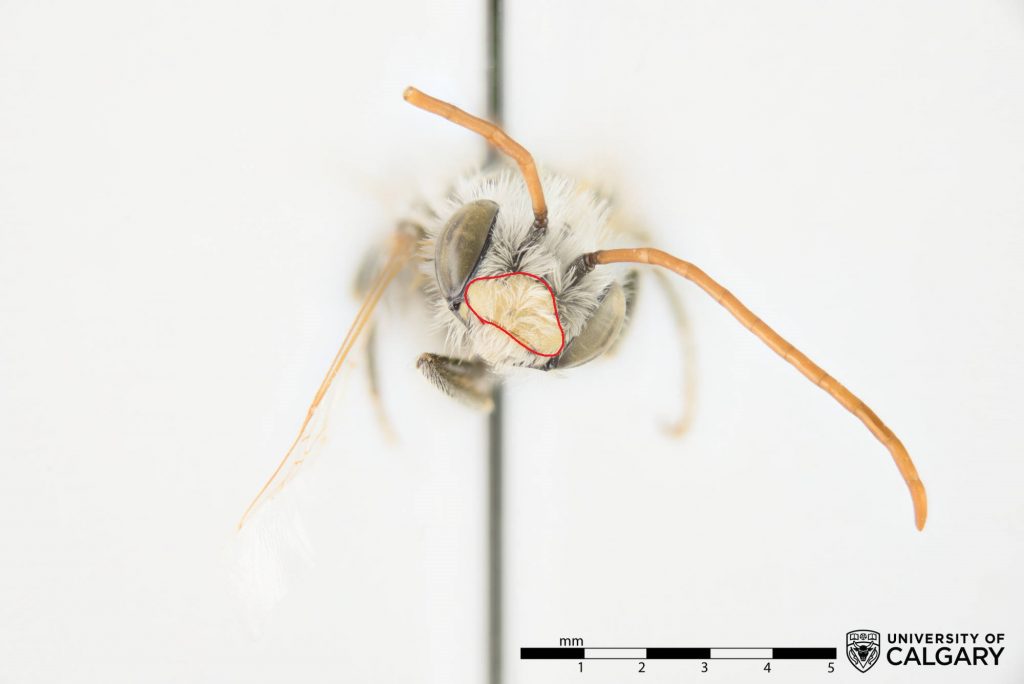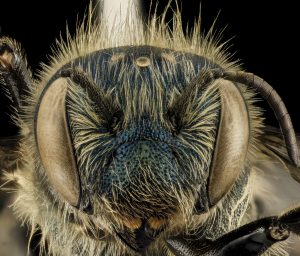Functions
Get, Store or Distribute Resources – Capture, Absorb, Filter, Store and Distribute – Solids
Maintain Community – Provide Ecosystem Resources – Pollinate
The clypeus of the bee is the area below the antennae, but above the labrum and the mouth.1 On the bee Melissodes semilupina, from the University of Calgary Invertebrate collection, it is a pale yellow colour. You can see it outlined below:

The clypeus is one of the ways a bee can be identified, based on its shape as well as the type of hairs present on it. It can be used to forage and hold onto pollen, much like the scopa, or it can be modified to help build nests.


Two female specimens from the genus Osmia. Osmia texana (left) and Osmia lignaria (right) from the USGS Bee Inventory and Monitoring Lab.
Both of these bees have modified clypei to build their nests. Bees from the genus Osmia are known as mason bees, due to the fact that they create their nests out of naturally occurring holes or gaps and build small pockets for each of their eggs using substrates like mud.


Female Heriades carinatus (left) and female Osmia inspergens (right) from the USGS Bee Inventory and Monitoring Lab.
Compare the bees above with these two, which have more modifications for pollination. Notice the density of the hairs on the clypeus, their shape and their length. Pollen can be collected onto the face by rubbing their heads against the anthers of flowers, then placed onto the scopa using the front basitarsi.2
The clypeus is especially useful in a practice known as buzz-pollination, where the bee vibrates against a flower whose pollen is not accessible to make the pollen shoot out and cover the bee. The pollen is caught on the bristles of the clypeus, so it can be collected and brought back to the hive. 1
Some of the stunning images on this page are courtesy of Sam Droege and the USGS Bee Inventory and Monitoring Lab, which develops identification tools and surveys for native bees.
This page was created by Holly Kerstiens in collaboration with Dr. Mindi Summers, Dr. Marjan Eggermont, Dr. Jess Vickruck, Lincoln Best and Dr. Alex Ralevski as part of an independent studies project in winter 2019. This information is also available as a collection on AskNature.org.
Sources
1 Bumblebees of North America
Princeton University Press. 2014.
Williams P.H., Thorp R.W., Richardson L., & Colla, S.
2 The Bees of the World
Hopkins Fulfillment Service. 2007.
Michener, C.D.
